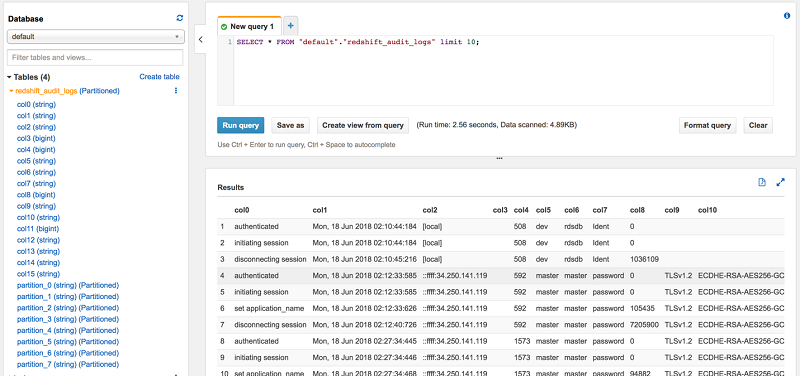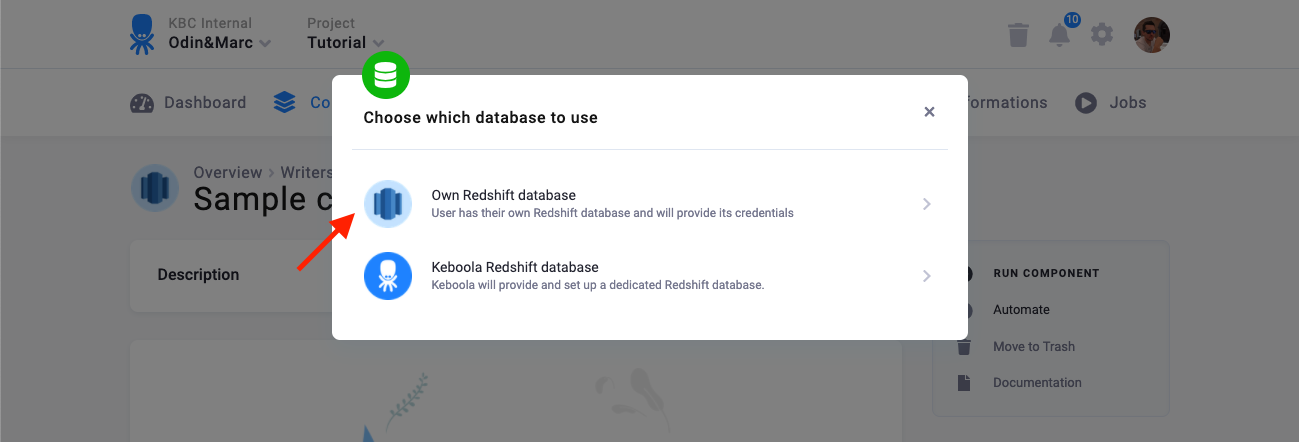
- #Redshift alter table update
- #Redshift alter table password
Search PathĪ search path is basically a comma-separated list of existing schema names. REVOKE command can be used to remove the privilege of creating new objects in public schema.

SELECT DISTINCT tablename FROM pg_table_def WHERE schemaname = 'public' īy default, all users have CREATE and USAGE privileges on the public schema. PostgreSQL 12 Documentation: pg_namespace Amazon Redshift allows for the maximum of 9900 schemas to be created within a database.Īll schemas created in a database are listed in a pg_namespace catalog table. To give the ownership of a schema to a specific user run CREATE SCHEMA schema_name AUTHORIZATION username. To define a new schema in a database use the command CREATE SCHEMA schema_name (obviously the name cannot be public). names given to objects used by one application do not collide with the names of objects used by other applications.
 database is organized into logical groups. many developers can work in the same database without interfering with each other. Schemas are similar to file system directories, except that schemas cannot be nested.Įxamples of how usage of schemas can help with organization and concurrency issues: By default, a database has a schema called PUBLIC. Each schema has its objects like tables and views. SchemasĪ database contains one or more schemas. To delete such a group, the privileges have to be revoked first. A group cannot be dropped if it has any privileges on any objects. This command deletes the group, but not individual users. To delete a user group use command DROP GROUP groupname. Finally, to rename an existing group run ALTER GROUP groupname RENAME TO new_groupname. To remove a user from the group run ALTER GROUP groupname DROP USER username. To add a user to the group run ALTER GROUP groupname ADD USER username. To create a group and assign users to it run CREATE GROUP groupname WITH USER username1, username2. Only a superuser can create, alter or drop groups. To view information about users, query the system table pg_user. Possible modifications are changing the level of access the user has to the Amazon Redshift system tables and views, disabling the option for a user to change its password, renaming a user, setting an expiration date on a user or limiting a number of database connections a user is permitted to have open concurrently. To make changes to an existing user account use an ALTER USER command. The owner of these objects will be changed to ‘unknown’. Therefore, the user can own objects in another database and still be dropped. However, Redshift checks only the current database before dropping the user. On the attempt of dropping such a user, Redshift will return an error. Note that you cannot drop a user if it owns any database object (such as a table, view, schema or database). To remove an existing user, run command DROP USER username (or to remove multiple users DROP USER username1, username2, username3).
database is organized into logical groups. many developers can work in the same database without interfering with each other. Schemas are similar to file system directories, except that schemas cannot be nested.Įxamples of how usage of schemas can help with organization and concurrency issues: By default, a database has a schema called PUBLIC. Each schema has its objects like tables and views. SchemasĪ database contains one or more schemas. To delete such a group, the privileges have to be revoked first. A group cannot be dropped if it has any privileges on any objects. This command deletes the group, but not individual users. To delete a user group use command DROP GROUP groupname. Finally, to rename an existing group run ALTER GROUP groupname RENAME TO new_groupname. To remove a user from the group run ALTER GROUP groupname DROP USER username. To add a user to the group run ALTER GROUP groupname ADD USER username. To create a group and assign users to it run CREATE GROUP groupname WITH USER username1, username2. Only a superuser can create, alter or drop groups. To view information about users, query the system table pg_user. Possible modifications are changing the level of access the user has to the Amazon Redshift system tables and views, disabling the option for a user to change its password, renaming a user, setting an expiration date on a user or limiting a number of database connections a user is permitted to have open concurrently. To make changes to an existing user account use an ALTER USER command. The owner of these objects will be changed to ‘unknown’. Therefore, the user can own objects in another database and still be dropped. However, Redshift checks only the current database before dropping the user. On the attempt of dropping such a user, Redshift will return an error. Note that you cannot drop a user if it owns any database object (such as a table, view, schema or database). To remove an existing user, run command DROP USER username (or to remove multiple users DROP USER username1, username2, username3). #Redshift alter table password
To create a user, run command CREATE USER username PASSWORD password. Additionally, users with CREATE DATABASE rights can create databases and grant or revoke access to them. They can own databases and database objects and grant or revoke privileges on those objects to other users or groups of users. UsersĪmazon Redshift user accounts can be created and dropped only by a database superuser. The keyword CREATEUSER indicates that a superuser is created (the default is NOCREATEUSER). To create a new superuser, you have to be logged in as a superuser and run a command CREATE USER username CREATEUSER PASSWORD password. Especially when your daily work with database is not strictly connected with database security management, you should not perform operations using superuser. Since superusers always have all privileges, regardless of any GRANT or REVOKE commands, you should be very careful with using them. A superuser can create another superuser.
USAGE - granted on specific schema, makes objects in that schema accessibleĭatabase superusers have the same privileges as database owners. TEMPORARY - create temporary tables in the specified database (needed to run Amazon Redshift Spectrum queries). REFERENCES - create a foreign key constraint (has to be granted on both referenced and referencing table). DELETE - delete a data row from a table (requires also SELECT privilege). 
#Redshift alter table update
UPDATE - update a table column (requires also SELECT privilege). SELECT - select data from a table or a view. To grant a privilege use GRANT command, to revoke a privilege use REVOKE command.Īmazon Redshift supports the following privileges: If you run a CREATE TABLE statement you will automatically become an owner of this table. Only this user has the privilege to modify or destroy the object and grant privileges on it to other users or groups of users. The user which created a database object is its owner.







 0 kommentar(er)
0 kommentar(er)
